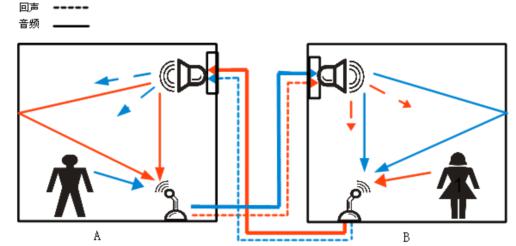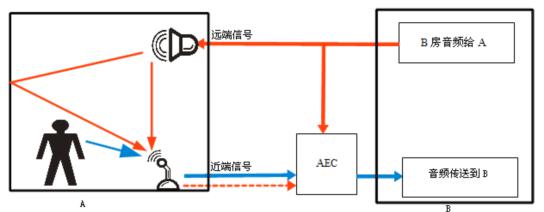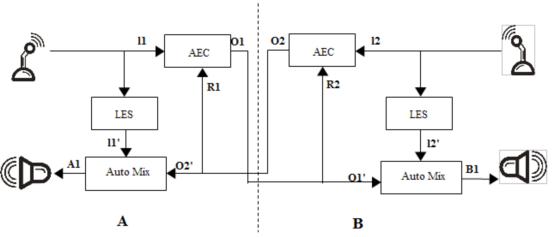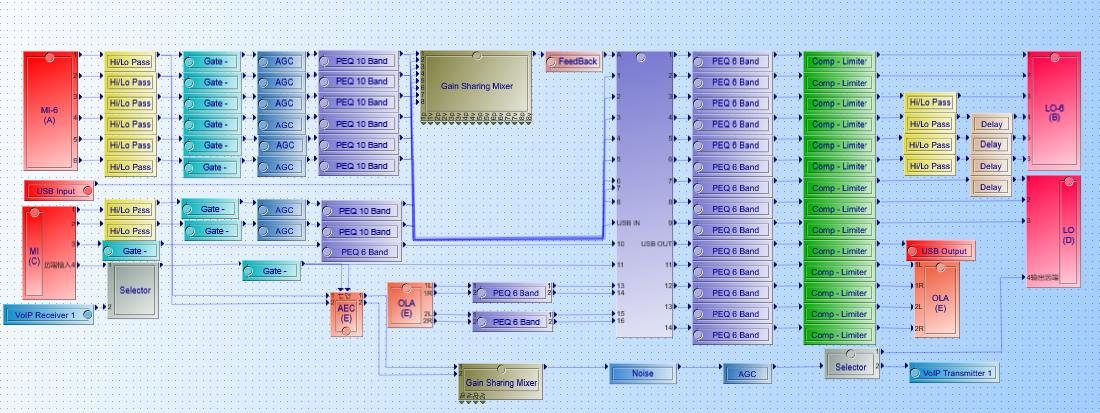With the development of network communication, network teleconferencing has become an effective way for enterprises, governments, multinational groups and other branches to realize face-to-face communication through the Internet. Users have broken through time and geographical restrictions, thus providing users with high efficiency. Quickly communicate new ways to effectively reduce the company's operating costs and improve the efficiency of the company's operations. But remote audio and video also brings some new problems. From the audio point of view, echo is one of the most common sound problems in remote audiovisual conferences.

In teleconference applications, the reflected signal between the microphone and the speaker causes the acoustic echo to be normal. For example, when two people communicate in two rooms, the sound of room A is transmitted to the speaker of room B through the microphone, and the microphone of room B will receive the reflected sound from the speaker and the wall and then return it to the output of room A. This will cause an echo. Acoustic echo usually occurs when the microphone and speaker are in the same space, which reduces the quality of the call.

The primary role of AEC is to simulate the impulse response in the echo path, including spatial and temporal delay reflections. According to this principle, the AEC samples the signal from the far end, and the AEC inverts the signal sampled by the far end by 180 degrees and cancels the near-end signal. If it is the actual echo signal, the echo will be eliminated without affecting the user's speech. sound. The picture below is intended to eliminate echo for B, and B will not be able to hear its own echo from the speaker.

The role of AEC is to eliminate echo in teleconferencing applications with audio quality bandwidths up to 24 kHz. AEC has the ability to improve mutual communication, has two-way inspection function, and can effectively eliminate echo. The AEC architecture diagram is as shown:

OCTO Jr uses a high-performance DSP chip to integrate the functions required for audio processing. It comes standard with 6 channels of analog input and 6 channels of analog output, 3 expansion card slots (C, D, E), of which E slot Optional digital audio card (2 RJ45 ports, OCTOL-Link digital transmission, 2 channels of input + 2 channels of output and control signals for each RJ45 digital port), E-channel can also be equipped with 2-channel analog Output. Both C and D slots can be optionally equipped with 4 channels of analog input or 4 channels of analog output, and a single unit can handle up to 28 audio channels. The system adopts graphical software control, which is programmed, parameterized and controlled by the software installed in the computer. The system presets a variety of application programming, which is convenient for the user to quickly select.
As shown in the figure: the machine model is 14 input + 14 output, of which 10 channel input + 10 channel output is analog channel, and the other 4 channel input + 4 channel output is digital channel with 2 channel independent AEC echo cancellation. When you need to use the AEC echo cancellation function, you need to install the digital card and AEC card at the same time to have this function.

The default input channel 1 and input channel 2 of the machine are equipped with echo cancellation. If you are in remote audio and video, the microphone needs to receive these 2 channel inputs, while the other DVD and computer audio sources are input from input 3-9 channels. An optional digital panel can be used to input from the digital channel, and the digital transmission distance between the panel and the machine is 250 meters. The analog input channel 10 is a remotely transmitted signal that can be routed through the routing matrix to the local PA output. Analog output channel 10 is the channel through which local microphone sound is transmitted to the remote conference room.
The OCTO JR machine is equipped with VOIP function for voice transmission directly over the LAN/Internet. For example, VOIP is used, and the remote conference room is equipped with OCTO JR machines or other devices compatible with the standard VOIP protocol. The system is added to the selector module, which makes it more necessary to select the built-in VOIP module to transmit audio, or to use analog input and output to transmit the far-end audio.

AEC echo cancellation module, initial convergence: 128ms, system optimization can eliminate echoes with delays up to 350ms.

The above is one of the applications of OCTO JR machine for echo cancellation in remote audio and video. For more information about ATESI products, please pay attention to the next article and the official website of ATEI: http://
Stator Core welding is a important process for stator core assembly. We are able to use TIG, MIG, LASER weld to meet different requirement for customers. The stator core is an important part of the stator and the main component of the magnetic circuit of the motor. Different sizes of stator cores have different technological processes and application fields. For example, small-sized stator cores are usually assembled by interlocking, and the outer diameter is usually less than 200mm. Large-sized stators are assembled in different ways depending on the motor design, such as stator core by cleating and staor core by welding.
Stator Core By Welding,Stator Iron Core,Bldc Stator Core,Laminated Stator Core
Henan Yongrong Power Technology Co., Ltd , https://www.hnyongrongglobal.com